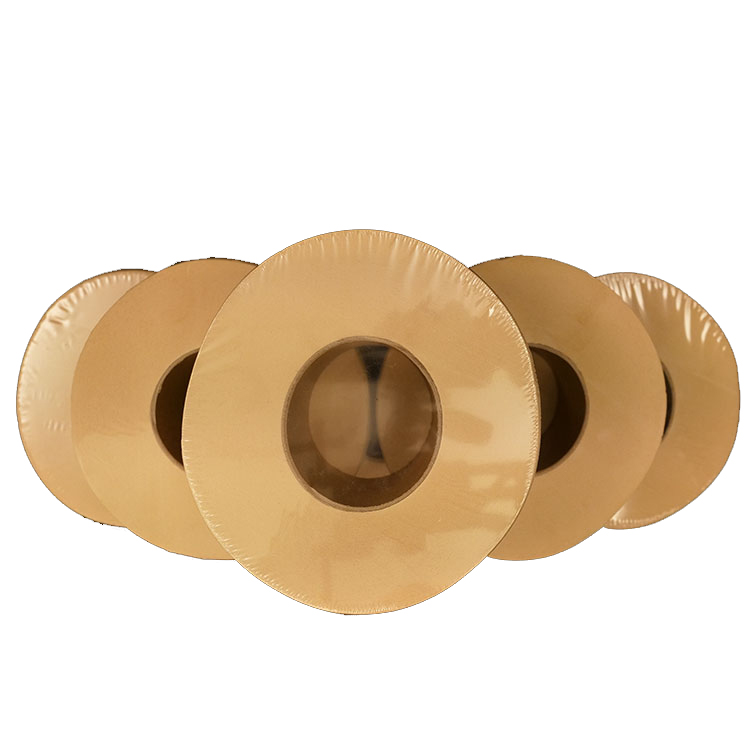toilet paper is an essential element of our daily routines, providing comfort and cleanliness in every use. However, not all toilet papers are created equal. Some are soft but lack durability, while others may seem strong, but leave behind irritation. With so many options on the market, finding the perfect balance of softness, strength, and sustainability can be a daunting task. That’s why we’ve compiled this ultimate guide to the world’s best toilet paper, exploring the top contenders, emerging trends, and cultural variations in usage.
Unveiling the Pinnacle of Toilet Paper: A Comprehensive Review

When it comes to toilet paper, there are a few key attributes that must be considered to determine its quality. These include softness, strength, absorbency, dissolvability, and sustainability. In this section, we will delve into each of these aspects and uncover what makes for exceptional toilet paper.
Softness: The Key to Comfortable Wipes
Softness is perhaps the most crucial aspect of toilet paper. It directly affects our comfort and can make or break a restroom experience. The softest toilet papers are typically made from long, tightly woven fibers that create a smooth and gentle surface. These fibers can be sourced from various materials such as virgin wood pulp, bamboo, or recycled paper.
Among these choices, bamboo stands out as a popular option due to its natural antibacterial properties and sustainable growth. Brands like Bim Bam Boo and Who Gives A Crap offer bamboo toilet paper that is both soft and eco-friendly.
However, the softest toilet paper isn’t always the most durable. Some brands compromise on strength to achieve a softer texture, leading to frequent tearing and wastage. That’s why it’s essential to strike a balance between softness and durability for an optimal experience.
Strength: A Necessity for Efficient Use
While softness is a desirable quality, strength is a necessity. Toilet paper should be strong enough to withstand crumbling or tearing during use. The thickness and density of the fibers determine the strength of toilet paper. Some brands use a double or triple-ply construction to enhance the strength of their product. However, this also means using more material, which can contribute to environmental concerns.
To avoid compromising strength for sustainability, look for toilet papers made from high-quality recycled materials. These papers are often just as durable as those made from virgin materials, but with the added benefit of being eco-friendly.
Absorbency: Ensuring Hygiene and Cleanliness
The ability to absorb liquid effectively is crucial for a hygienic and satisfying wipe. Highly absorbent toilet papers quickly soak up moisture, leaving you feeling refreshed and clean. Microfiber toilet papers are known for their exceptional absorbency, making them a popular choice for those seeking a luxurious bathroom experience.
However, microfiber toilet paper is often not biodegradable and can take years to break down in landfills. It’s essential to consider the environmental impact when choosing highly absorbent toilet paper and opt for sustainable options whenever possible.
Dissolvability: A Vital Factor for Plumbing Systems
For proper function in plumbing systems, toilet paper should dissolve easily when flushed. Dissolvable toilet papers break down rapidly in water, minimizing the risk of clogs and backups. This aspect is especially crucial for older plumbing systems that may not be equipped to handle thicker, less dissolvable papers.
When it comes to dissolvability, recycled paper toilet papers have an edge over virgin paper ones. The recycling process breaks down the fibers, making them easier to dissolve. Brands like Seventh Generation and Green Forest offer recycled toilet paper that is both environmentally friendly and dissolvable.
The Top Contenders: A Comparison of the World’s Elite Toilet Paper Brands

Now that we’ve explored the critical attributes of exceptional toilet paper let’s take a closer look at some of the top contenders in the market. These brands have been chosen based on their popularity, quality, and sustainability efforts.
| Brand | Key Features | Sustainability Efforts |
|---|---|---|
| Charmin Ultra Soft | Made with long, tightly woven fibers for softness and strength | Uses responsibly sourced materials and offers a recycling program |
| Cottonelle Ultra ComfortCare | Three-ply construction for enhanced strength | Partnered with WWF to promote sustainable forestry practices |
| Quilted Northern Ultra Plush | Microfiber technology for ultimate softness and absorbency | Committed to reducing environmental impact through sustainable packaging and sourcing |
| Bim Bam Boo | Made from sustainable bamboo | Carbon-neutral production and donates 50% of profits to environmental charities |
| Who Gives A Crap | Bamboo-based toilet paper | Donates 50% of profits to build toilets in developing countries and uses eco-friendly packaging |
The Throne’s Essential Accessory: Exploring the Luxurious Realm of Toilet Paper

While most of us are satisfied with the standard toilet paper options, some brands cater to those seeking a more luxurious bathroom experience. These premium toilet papers boast superior softness, strength, and absorbency, along with unique features for an added touch of luxury.
Beyond Softness: Unlocking the Technological Innovations in Toilet Paper
As technology advances, so does the world of toilet paper. Brands like Joseph Joseph and Kohler offer heated toilet paper holders, providing a warm and comfortable wipe every time. Others, like TUSHY and Brondell, have introduced bidet attachments that use water for a more thorough clean. These innovations not only enhance comfort but also reduce the need for excessive toilet paper usage, promoting sustainability.
The Sustainable Path: Discovering Eco-Friendly Toilet Paper Options
In recent years, there has been a growing awareness of the environmental impact of our daily habits, including toilet paper usage. As a result, many brands have taken steps to offer more sustainable options for their customers.
One such option is tree-free toilet paper made from alternative materials like bamboo, sugar cane, or wheat straw. These materials grow faster than trees and are more sustainable to produce, making them an eco-friendly choice. Additionally, recycled toilet paper uses post-consumer waste to create new products, reducing the need for virgin materials.
It’s essential to research and choose toilet paper brands that align with your values and prioritize sustainability efforts. Some brands even offer subscription services, delivering eco-friendly toilet paper to your doorstep regularly.
The Softness Spectrum: Navigating the Degrees of Toilet Paper Cushioning
As we’ve established, softness is a crucial factor when choosing toilet paper. But did you know that there are different levels of softness available in the market? Let’s take a look at the different types of cushioning in toilet paper.
1. Ultra-Soft
Ultra-soft toilet paper is the softest option available, often made from tightly woven fibers and microfiber technology. These papers provide a gentle and comfortable wiping experience but may come at a higher cost.
2. Soft
Soft toilet paper is a balance between comfort and durability. It offers sufficient softness for a pleasant wipe while also being strong enough to withstand use without tearing.
3. Medium
Medium cushioning toilet paper is a popular choice among those seeking both softness and affordability. While it may not be as plush as its softer counterparts, it still offers a comfortable and satisfactory experience.
4. Strong
If strength is your primary concern, then strong toilet paper may be the best option for you. These papers are less soft but provide exceptional durability, making them suitable for high-traffic restrooms.
The Environmental Impact: Understanding the Carbon Footprint of Toilet Paper
In the pursuit of the perfect toilet paper, it’s essential to also consider its environmental impact. The production, use, and disposal of toilet paper contribute to carbon emissions and deforestation. According to the Environmental Paper Network, the world consumes approximately 27,000 trees in toilet paper every day.
Choosing sustainable options and reducing excessive usage can help mitigate this impact. Additionally, some brands have taken steps to reduce their environmental footprint by using alternative materials, incorporating eco-friendly packaging, and partnering with organizations that promote sustainable forestry practices.
A Global Perspective: Uncovering the Cultural Variations in Toilet Paper Usage
While toilet paper is a common item found in most bathrooms, different cultures have unique habits and preferences when it comes to its usage. In many Western countries, toilet paper is the predominant form of hygiene, while in Asian cultures, water or bidets are often used for cleaning.
Additionally, cultural norms and taboos influence the use of toilet paper. For instance, in Japan, it is customary to use folded toilet paper rather than crumpled, while in some Middle Eastern countries, toilet paper must be disposed of separately from other waste.
The Future of Toilet Paper: Exploring Emerging Trends and Innovations
As society continues to prioritize sustainability and technological advancements, the world of toilet paper is likely to see further developments in the coming years. Some emerging trends include the use of alternative materials like hemp and grass for toilet paper production, as well as the incorporation of smart technology to monitor usage and reduce waste.
Conclusion
Toilet paper may seem like a trivial aspect of our lives, but its impact on our daily routines, comfort, and the environment should not be underestimated. With the variety of options available in the market, finding the perfect balance of softness, strength, and sustainability is possible. By understanding the key attributes of exceptional toilet paper and considering factors such as environmental impact and cultural variations, we can make informed choices for a more hygienic and sustainable bathroom experience.